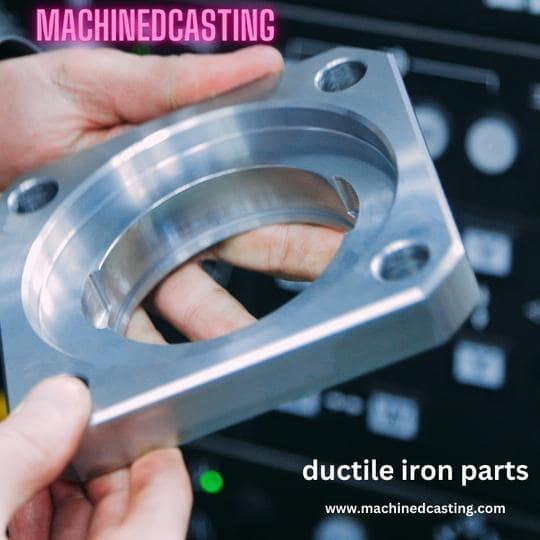Ductile iron, also known as nodular or spheroidal graphite iron, is a versatile material renowned for its excellent strength, ductility, and cost-effectiveness. Its unique mechanical properties make it an ideal choice for a wide range of applications across various industries. Understanding the manufacturing process, properties, and applications of ductile iron parts is crucial for engineers, manufacturers, and designers alike.
Manufacturing Process:
-
Melting and Casting: The production of ductile iron begins by melting iron along with specific alloying elements such as carbon, silicon, magnesium, and rare earth metals in a furnace. The molten metal is poured into molds.
-
Nodularization: Magnesium is added to promote the formation of graphite nodules within the iron matrix, ensuring ductility. Control of the cooling rate and precise composition is crucial in this stage.
-
Heat Treatment: Heat treatment processes like annealing or quenching and tempering are applied to enhance the mechanical properties of ductile iron, balancing hardness and strength.
Properties of Ductile Iron:
-
Strength and Toughness: Ductile iron combines high tensile strength with excellent toughness, making it capable of withstanding heavy loads and shock loads without fracturing.
-
Ductility: Its ability to deform under stress without losing its strength makes it highly ductile, allowing for complex shapes and intricate designs.
-
Corrosion Resistance: Ductile iron offers good resistance to corrosion, making it suitable for outdoor and submerged applications.
Applications:
-
Automotive Industry: Ductile iron is extensively used in automotive components such as crankshafts, gears, and engine blocks due to its high strength and wear resistance.
-
Construction: Its robustness makes it an ideal material for construction applications like pipes, fittings, and structural components in buildings and bridges.
-
Machinery and Equipment: Ductile iron parts find applications in various machinery and equipment, including valves, pumps, and hydraulic components due to their durability and reliability.
-
Agriculture and Mining: Ductile iron is employed in agricultural machinery parts and mining equipment for its resilience in harsh environments.
In conclusion, ductile iron parts remarkable properties and manufacturing versatility make it a sought-after material across numerous industries. Its strength, ductility, and cost-effectiveness continue to drive innovation in product design and engineering. Understanding its production process, properties, and diverse applications is fundamental for leveraging its advantages in various fields.
Mastering the use of ductile iron empowers industries to create robust, durable, and high-performance components, contributing significantly to the advancement of modern engineering and technology.


